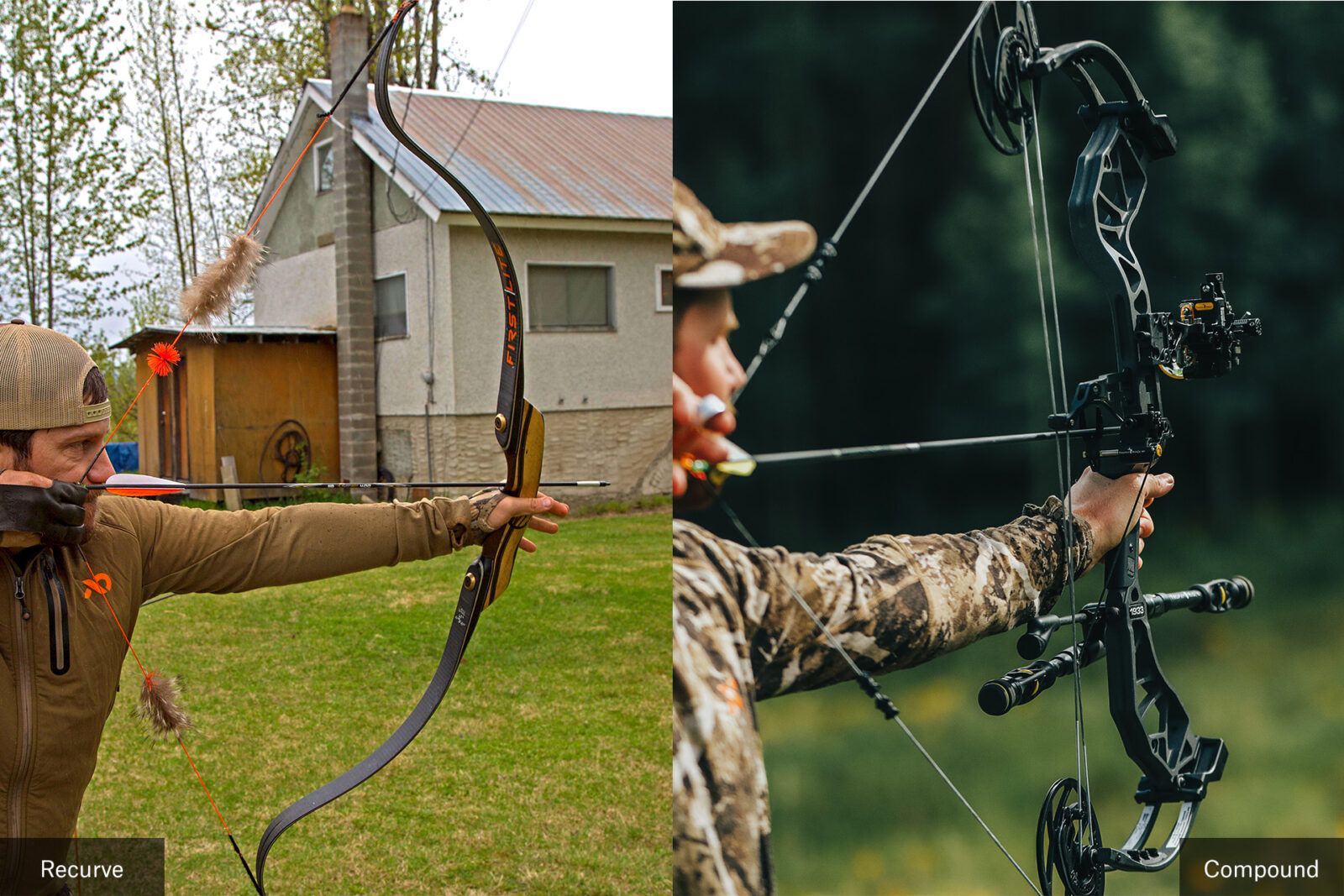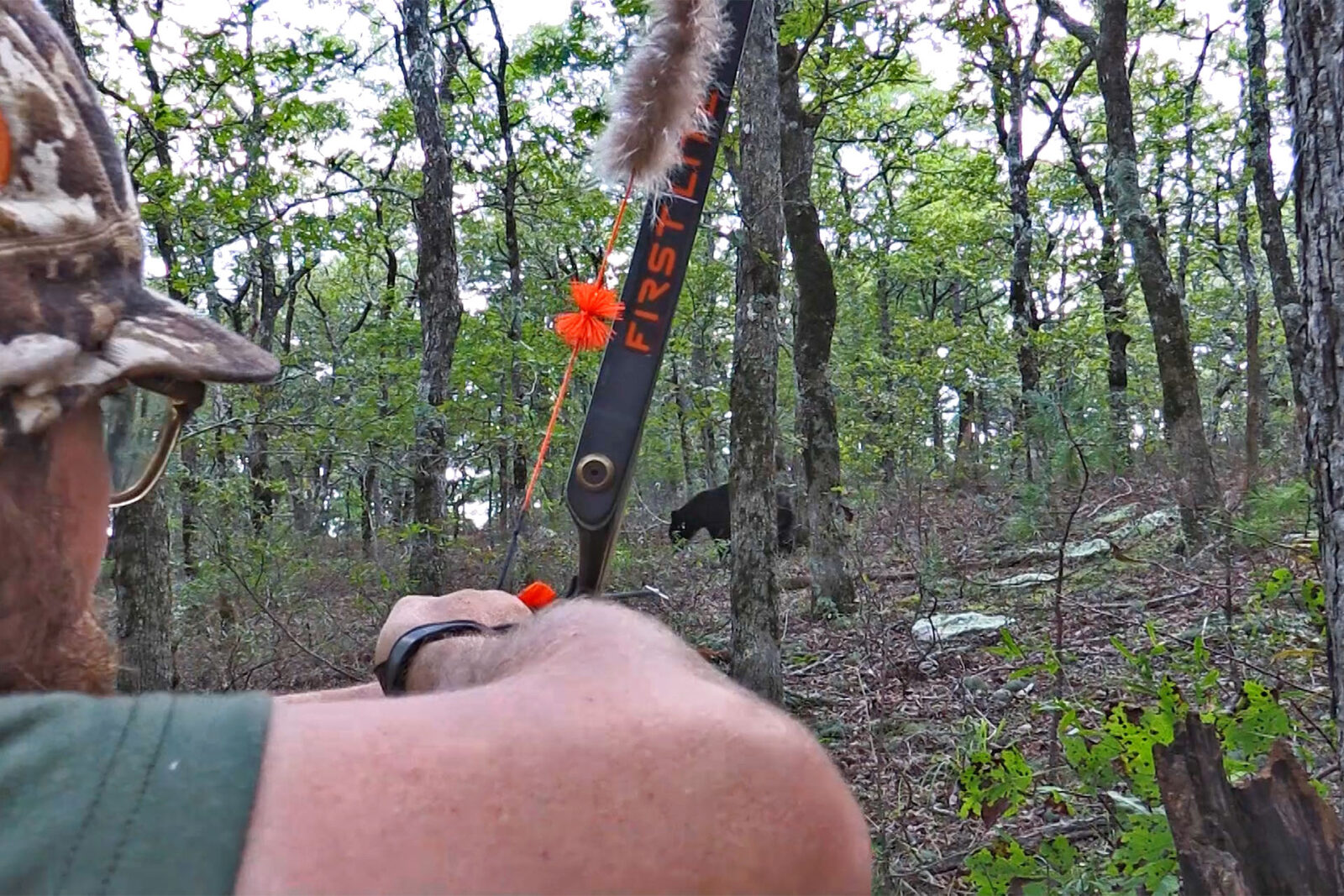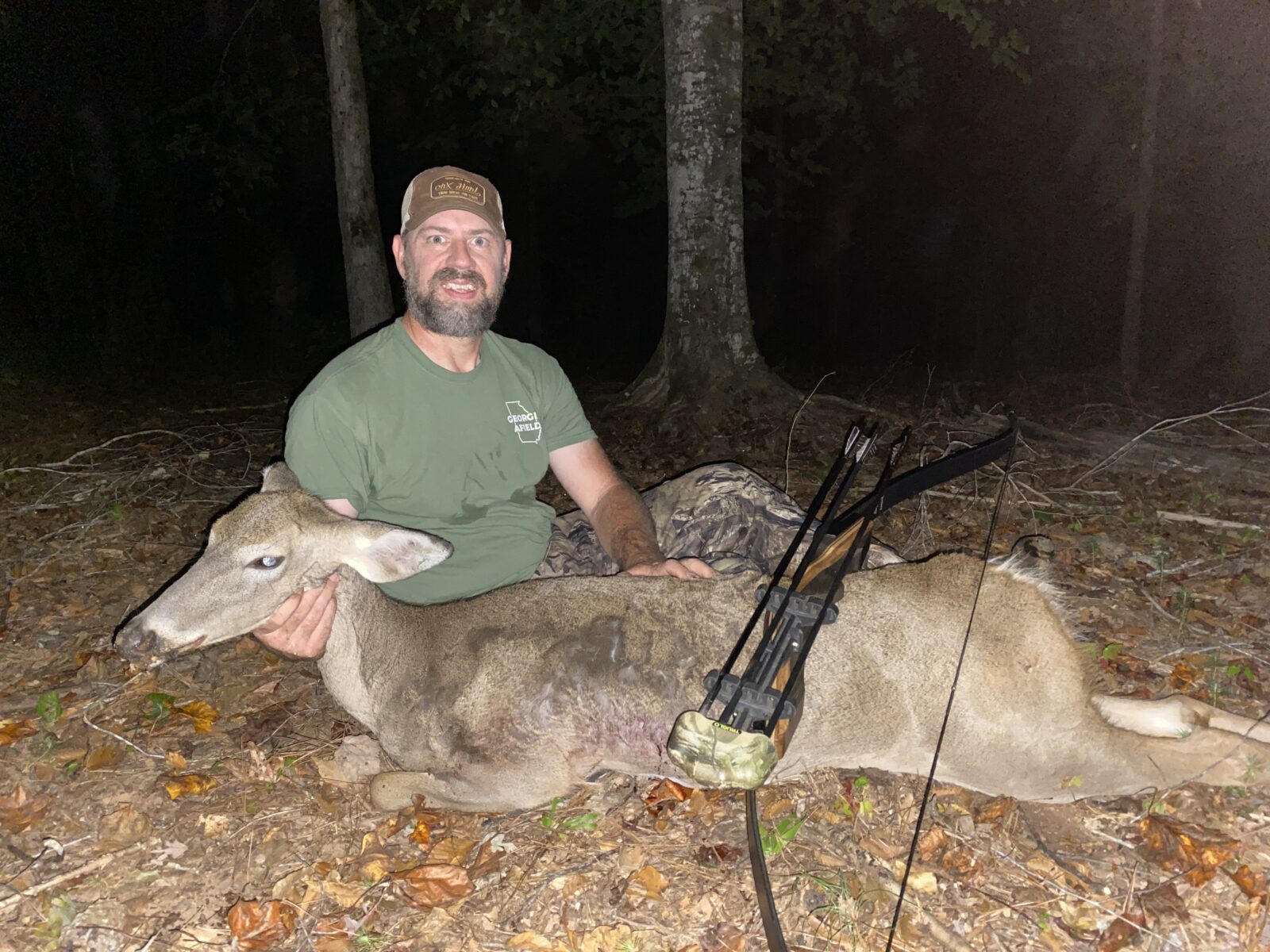The older I get, the more I appreciate the simple things in life. That desire for simplicity is what ultimately led to me purchasing my first recurve bow a few years back after years of contemplating the move to traditional archery.
What I quickly learned, however, was while a recurve bow may be simple, that doesn’t mean it’s easy. For a guy who had spent over 30 years packing a compound bow around the woods, the traditional archery learning curve was a little steeper than I expected.
In this article, we’ll look at some of the differences between hunting with a recurve and compound bow, the pros and cons of using a recurve, choosing your first recurve bow, and a few tips to help shorten the learning curve.
Recurve Bow vs. Compound Bow
If you’re new to bowhunting, then learning to shoot a recurve bow will be pretty straightforward. If you’re a compound shooter making the switch, however, be prepared to relearn some things. Let’s take a look at some of the main differences that set these two bows apart.

Size and Portability
Besides the much simpler design of the recurve bow, one of the first differences you’ll notice when handling each is that recurve bows are typically longer, but lighter than their wheeled counterpart.
While bow lengths vary by brand and model, most recurves typically run in the 52- to 66-inch range while many modern compound bows are half that length.
The longer length can create challenges shooting from treestands or ground blinds. I learned the hard way the first time I hunted with my recurve from my Summit climbing stand. I couldn’t get the bow drawn back to shoot below me due to the wrap-around bar on the seat portion of my stand. I ended up having to lower my seat all the way down to my platform and stand the whole time so I’d be able to shoot if the opportunity arose.
Draw Weight and Let-off
Another major difference between recurve and compound bows is in draw weight and let-off. Since there is no let off on a recurve bow, it’s much harder to draw back and hold at anchor than a compound of the same peak draw weight. So don’t think just because you shoot a 60- or 70-pound compound bow, that you should buy the same poundage recurve. If you do, you’re going to struggle to shoot it effectively.
The only way to truly know what draw weight recurve bow you need is to try some different ones, but I can assure you it will be considerably lower than the compound bow you’re currently shooting. My Mathews VXR is set on 65 pounds, but I shoot a 40-pound recurve. Because of my long draw length, I’m actually holding around 45 pounds at full draw, but it’s still considerably less than my compound.
For a new traditional archer, you’re much better off starting at a lower poundage and working your way up than buying a bow that’s too heavy for you. An overly heavy bow will lead to bad habits in your form.
Aiming

Aiming is another area that separates recurve bows from compounds. Most compound shooters have sights on their bow and a peep sight in their string that makes aiming and shooting at various yardages a breeze.
Recurve shooters, on the other hand, typically do not use sights. They either aim using the point of their arrow as a reference, or they shoot instinctively. Both techniques take much more consistent practice to master than using the sights on a compound.
Performance
Recurve bows perform much differently than modern compound bows. Recurves are much slower shooting, which requires some adaptations to how you hunt.
In particular, new traditional bowhunters will want to keep shots close. For my first season of hunting with a recurve, I limited myself to shots inside 15 yards. Anything beyond that, and I just wasn’t confident in my consistency. Even today, I limit myself to 20 yard shots. That’s not to say you won’t be able to kill a deer beyond 20 yards with a recurve, but it’s going to take a lot of consistent, repetitive practice to get there.
Pros and Cons of a Recurve Bow
Pros
Simplicity: Recurve bows have a simple and straightforward design with fewer moving parts, so there is less to go wrong and they are easier to maintain.
Quietness: Due to their design, recurve bows tend to be quieter when shooting.
Portability: Recurve bows are generally lighter than compound bows, making them easier to carry in the field.
Versatility: Some recurve bows feature a takedown design, allowing the limbs to be replaced with higher or lower draw weights as the hunter’s skill and strength improve.
Cons
More difficult to master: The lack of letoff and sights make recurves more challenging to shoot consistently and accurately compared to compound bows.
More awkward to handle: The longer length of a recurve bow makes them more difficult to handle in a treestand or ground blind.
Lower arrow speed and power: Recurve bows generally produce lower arrow speeds, which can result in a more pronounced trajectory and less power on impact.
Learning to Hunt with a Recurve Bow
Thanks to modern technology, there’s no shortage of resources to learn how to hunt with a recurve bow. YouTube can be a great starting point for learning the basics. Just be sure the person you’re watching has actual hunting experience and knows what they’re talking about.
Another resource that I found helpful when learning the ropes was traditional archery Facebook groups. If you’re not a Facebook user, then try some of the traditional archery website forums. The great thing about traditional archery is the tight-knit community feel. Most traditional archers are more than willing to help someone new to the sport, so don’t be afraid to jump in and ask questions.
You can even take this a step further and look for local or state traditional archery groups that you can plug into. Here in Georgia, there is a great community of traditional bowhunters who get together on a regular basis and are happy to welcome a new shooter into the group. This can be a great resource to shorten the learning curve.

One word of advice when learning to shoot your recurve: find a style you’re most comfortable with and stick with it. There are differences in the way each traditional archer draws their bow, the way they aim, how long they stay anchored before the shot, and much more.
Every archer has their own style, and there is no “right way” that’s best for everyone. Try some different techniques when you first get started shooting, decide which feels most comfortable to you, and stick with it!
Choosing the Right Recurve Bow for You
Finding the right recurve bow for a first-time hunter can be a daunting task. There are countless options on the market at all sizes, styles, and price ranges. It would be impossible to cover every aspect of the decision and make a suggestion for each reader in the scope of this article. What I can do is make a recommendation that should work for most first-time traditional archers.
My suggestion is to start with a nice, budget-friendly option like the Samick Sage recurve. This is a decent quality bow at a very inexpensive price point. That way, if you eventually decide traditional archery isn’t for you, you won’t be out too much money.
Another great feature of the Samick Sage is that it’s a takedown bow, meaning the limbs unscrew from the riser for easy packing. So, if you stick with it, as you build up your archery muscles and get comfortable shooting the bow, you can replace the limbs inexpensively with higher poundage ones.
Final Thoughts
Hunting with a recurve bow is the ultimate challenge. It takes a lot of practice, and the learning curve can be steep for someone who’s used to the modern conveniences of a compound bow. But when it all comes together, and you’re able to take your first deer or big game animal using traditional archery, there is a huge sense of accomplishment and pride. In the end, you’re only left wondering why you didn’t try it sooner.
FAQ
Recurve bows can be a good option for a new bowhunter due to their simple design and ease of use. However, they do require consistent practice to master. If your time is limited, and you want something you can quickly become proficient with for hunting, then a compound bow is probably a better option.
There are a few reasons why someone might choose to shoot a recurve bow. As we mentioned previously, they have a very simple design and are much less intimidating than a more complex compound bow.
They are also a much more affordable way to get into archery. Not only can you get a decent recurve bow well under $200, you won’t need all the accessories that you would buy for a compound bow, like sights, a stabilizer, and a release.
There is also nostalgia involved with shooting a recurve, since they have been used for thousands of years in cultures around the world.
Choosing the right length recurve bow for a new shooter can be confusing. Shorter bows are going to provide better arrow speeds on average and will be easier to maneuver in a blind or deer stand. On the flip side, longer bows are more forgiving of minor flaws in shooting form, and are a better option for archers with longer draw lengths.
A good rule of thumb to start is to choose a bow at least two times your draw length. So if you have a 29-inch draw length, you would want at least a 58-inch recurve bow. If you’re going to use the bow for hunting, then you’ll probably want to stick to something 60 inches and under, just to ensure you don’t run into issues with ground or treestand clearance.
A good rule of thumb to start is to choose a bow at least two times your draw length. So if you have a 29-inch draw length, you would want at least a 58-inch recurve bow. If you’re going to use the bow for hunting, then you’ll probably want to stick to something 60 inches and under, just to ensure you don’t run into issues with ground or treestand clearance.